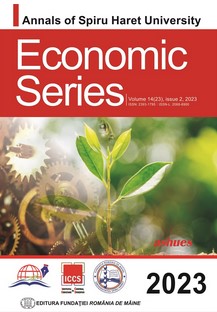MONETARY POLICY AND UNEMPLOYMENT RATE IN DEVELOPING ECONOMIES: EVIDENCE FROM NIGERIA
MONETARY POLICY AND UNEMPLOYMENT RATE IN DEVELOPING ECONOMIES: EVIDENCE FROM NIGERIA
Author(s): Abdurrauf Babalola, Muhammad YELWA, Oyinlola OLANIYISubject(s): National Economy, Labor relations, Economic policy, Socio-Economic Research
Published by: Editura Fundaţiei România de Mâine
Keywords: Monetary Policy; Monetary Policy Rate; Unemployment;
Summary/Abstract: This study analyzed the impact of monetary policy on the unemployment rate in Nigeria using quarterly time-series data from 1990(1) to 2019(3). The monetary instruments used were the monetary policy rate (MPR), cash reserve ratio (CR) and liquidity ratio (LR). Inflation (P) was added to represent a macroeconomic variable. The autoregressive distributed lag cointegration/bound test technique was employed in the analysis as directed by the order of integration. The study found that, in the short run, monetary policy, proxied by its instruments, monetary policy rate (MPR) and cash ratio (CR), did not have a significant effect on the unemployment rate in Nigeria. However, the liquidity ratio (LR) was significant. The finding also revealed that, in the long run, periods, monetary policy (MPR and LR) has a significant impact on the unemployment rate, though, CR did not. Furthermore, it was discovered that monetary policy has a low speed of adjusting the economy back to full employment equilibrium. Lastly, the liquidity ratio happened to be the most efficient individual instrument in both the short and long-run periods. In the long run, apart from the liquidity ratio, the monetary policy rate has the greatest impact and is the most efficient.
Journal: Annals of Spiru Haret University. Economic Series
- Issue Year: 23/2023
- Issue No: 3
- Page Range: 39-62
- Page Count: 24
- Language: English

